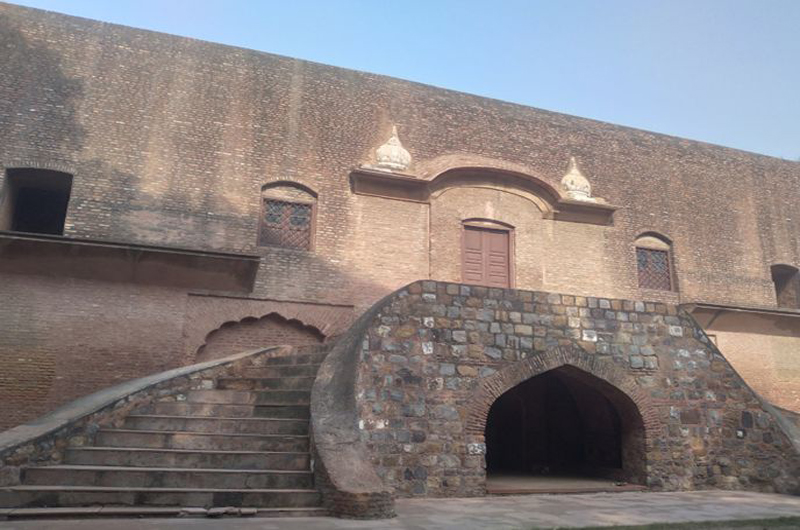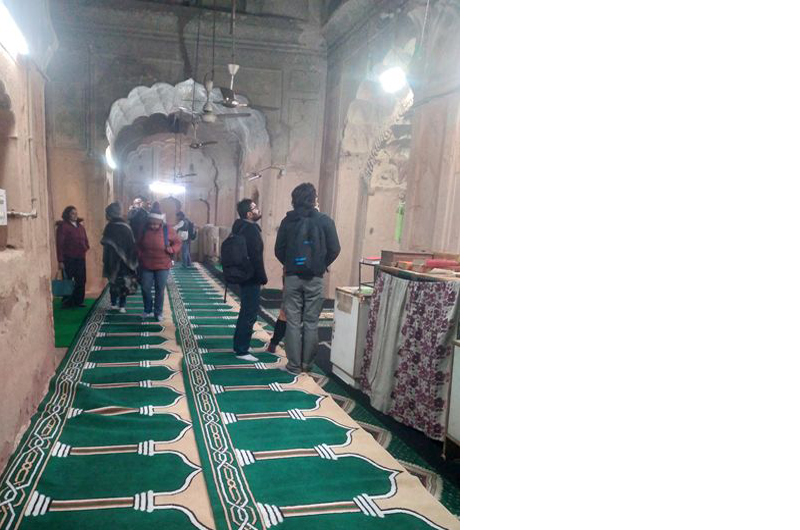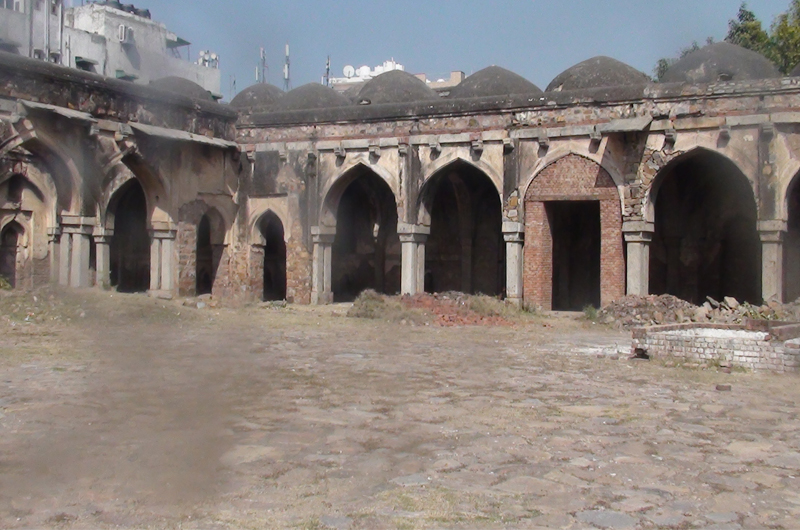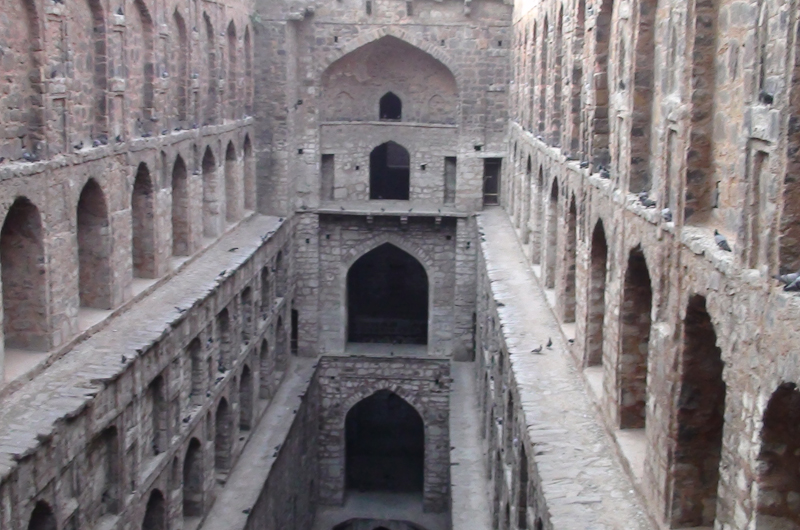Stepping back into the past to get the flavour of bygone eras and learn about disappearing arts by going on heritage walks through cities is gaining currency with people from diverse backgrounds, says Sarita Brara as she describes how heritage walks in Delhi are getting more and more popular
Heritage walks in Delhi that began about a decade-and-a-half ago are becoming more popular with every passing year. One the one hand, the number of people – young and old, men and women, domestic and foreign tourists – joining these expeditions has increased and, on the other, the walks themselves have evolved, with organisers experimenting and innovating in both their manner and content.
Delhi has a number of monuments, palaces, forts, tombs, havelis, dargas and mosques, minarets, step-wells and other ancient structures, some intact, some in ruins. Some of these are hidden in the congested lanes of old Delhi, some can be found in remote corners, and others in the heart of the city. Each of these monuments has an interesting storyto tell about a bygone era. The walks are no longer only about architecture and history, they are about ghosts and jinns, or are soaked in soulful Sufi music. Some walks are visits to old theatres that make one nostalgic, to sample street food or to experience the power of the monsoon. Nature walks and walks with social themes are also organised.

DelhiByFoot (DBF) Adventures, the oldest heritage walk organisers in Delhi, started conducting the expeditions more than 12 years ago. Co-founders Ramit Mitra and Jayamala Iyer curated heritage experiences for school students for their curriculum-based outdoor-learning modules. “Actually, we began with just a series of baithaks (sittings) in a haveli in old Delhi back in 2014, where we went beyond the monument’s history and focussed on cultural heritage. We started Meet-The-Artiste/Artisan, connected to some fast-vanishing art/crafts like calligraphy, kite-making, blue pottery or Ravan effigy-making for Dusshera. We did poetry baithaks to re-introduce the literary and cultural achievements of Dilliwallas of the past,” say the organisers.
Walks giving insights into Durga Puja idol-making, the Nizamuddin Dargah Sufi Walks, Night Walks in Old Delhi, Qutub Minar and Mehrauli jungles areas, the Revolt of 1857 Walk in Meerut and Delhi, Women Power in Delhi, and heritage walks to less-explored forts like Tughalaqabad Fort and Lal Kot Fort are part of their agenda. Organisers of heritage walks adopt different ways to retell history, even using relevant poetry and book-reading sessions. As mikes and sound systems are not allowed at monuments, the organisers are resorting to dramatisation and use of poetry to create the right ambience for walkers.

The Darvesh Heritage Walks started in 2013. The art of theatre was woven into the experience. This writer has participated in heritage walks to Jahanpannah, Begumpur Mosque and Begumpur Bazar in South Delhi, all connected in some way with Mohammed Bin Tughlaq. It was like being in a travelling theatre, with Dharvesh Heritage Walks co-founder Nitika Arora alternating between the roles of Tughlaq and historian Ibn Battuta, as she enacted scenes from Girish Karnad’s play on Tughlaq, who the playwright portrayed as a megalomaniac.

Nitika’s dramatic portrayal of Tughlaq, whether lamenting as he neared the end of his life or emotionally explaining his decision to shift his capital from Delhi to Daulatabad – complete with costume and background music – left the walkers spellbound. The history of the period, and what must have been going through Tughlaq’s mind at different points in his life, seemed to come alive before us.
Expeditions can also be customized to suit the age of the walkers, their areas of interest, and convenient time. A lot of research goes into organising such walks. “One has to recce the place or the monument several times before organising a walk,” says Mariam Siddiqui. The information conveyed has also to be researched. An intern with DelhiByFoot, Mariam is pursuing a doctorate degree in Mughal Nobility, and is equipped with not just facts and figures about the Mughal era but also a repertoire of gripping stories, anecdotes and quotes, with a sprinkling of couplets to keep the walkers’ interest alive. She was conducting a walk at the Qudsia Park complex in Old Delhi. A palace at one time, only an entrance gate, the Shahi (Emperor’s) Mosque and what may have been stables now remain to be seen. Qudsia Begum, born as Udham Bai, was a wife of the Mughal emperor Muhammad Shah and mother of emperor Ahmad Shah Bahadur.
DBF also organises festival-based explorations out of Delhi, including a trip to Vrindavan and Barsana during the Holi festival, to Rabindranath Tagore’s University Town of Shantiniketan, and the Hola Mohalla Festival of Anandpur Sahib in Punjab. Nitika Arora also organises walks for women’s organisations based on different themes. During the pandemic, when no walks could be conducted, she spent time researching the Partition of India. She takes visitors to the Purana Quila area, where hundreds of refugees camped after the Partition. She quotes poetry on the Partition and from other texts to leave a lasting impression on the participants. Not only that, Nitika trains women from the slum areas and low-income housing colonies to organise such walks so that people from these places also get to know about Delhi.

INTACH and other groups and individuals organise walks for schools which are interactive, and sometimes include quiz programmes in the walk locations. “Heritage walks not only add to our knowledge, broaden our minds, and show us history in a new light, they also provide an opportunity to meet people of all ages,” says 75-year-old Banani who came from Kolkata to settle in Delhi ten years ago. She eagerly awaits the start of winter when most of these heritage walks take place. “I had seen monuments in the capital on my earlier visits, but through these heritage walks, I have in a sense rediscovered Delhi, it’s past and present,” she shares.
Karan Seth, a government official, is one of the many who have been bitten by the heritage walk bug. “I have an interest in history and, moreover, an outing with likeminded people during weekends is what I love – it’s much preferable to being glued to mobile phones, which can become addictive,” he says.
Most people who have participated in these heritage walks feel they are quite different from the tours to monuments led by guides who have limited time and mostly simply parrot descriptions and factoids. The heritage walks are spiced with interesting information not easily available on the Internet. Moreover, the itinerary covers lesser-known monuments which do not form part of city tours. The trend of heritage walks has now also caught on in other historic cities of India.
(The writer is a senior journalist who lives in Delhi.)



 from Webdoux
from Webdoux